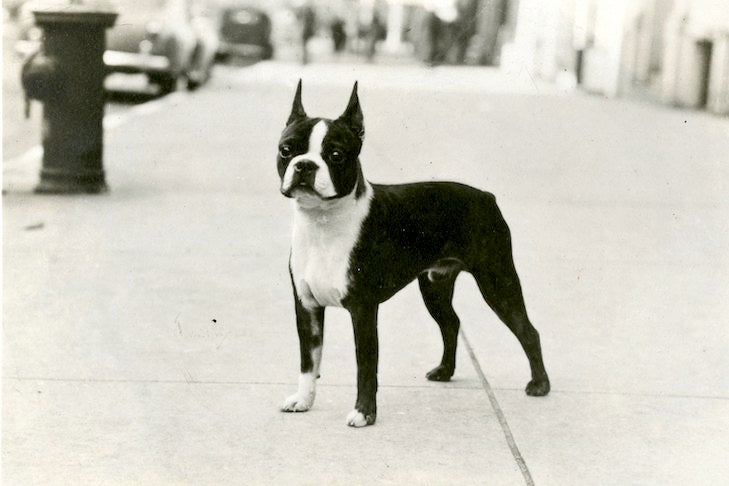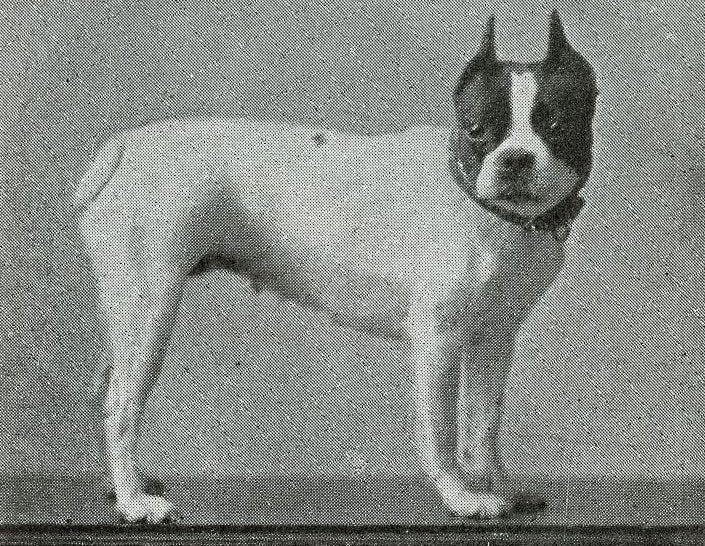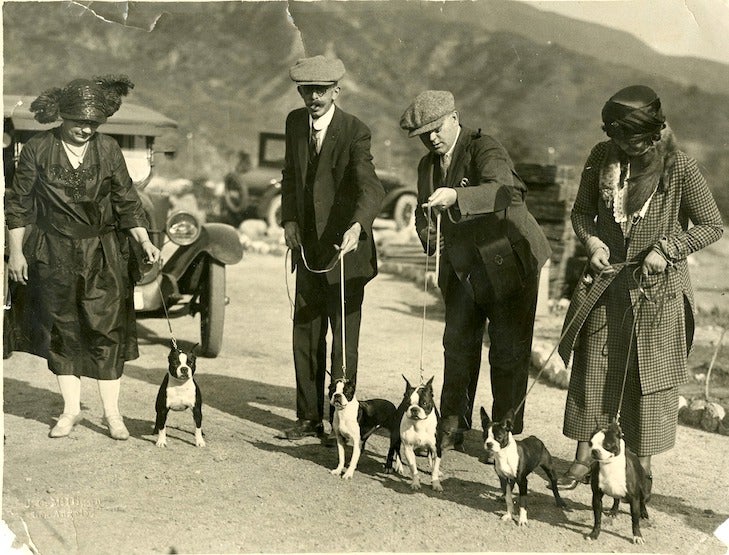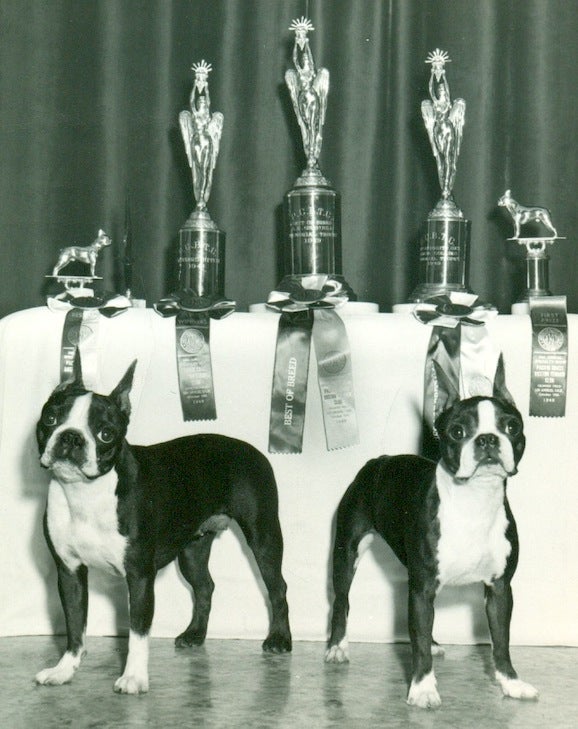
Architecture isn’t just about bricks and mortar. In the angle of a gambrel, or the carving over a doorway, we can sometimes glimpse the spirit of an age.
But buildings are static things, their importance often eroded over the decades until a preservationist steps up to remind us of their historical significance. In this respect, sometimes flesh and blood is – however counterintuitively –more durable than stone and tile.
Consider, for example, the Burnett House in Southborough, Massachusetts.
That 13-bedroom French Empire mansion was built in 1847 for Joseph Burnett, a chemist who revolutionized the manufacture of vanilla extract. His son, Edward, served a term as a U.S. congressman, but it was the younger Burnett’s dog life that interests us most.
Edward Burnett owned Burnett’s Gyp, a short-faced, all-white diminutive bulldog. In the 1860s, she was bred to Hooper’s Judge, a dark-brindle, white-blazed English import that was significantly heavier and higher on leg. Judge was believed to be a cross between an English Bulldog and a White English Terrier, a breed which is today extinct. Their union produced only one puppy, which was presumably whelped at Burnett House or one of its many outbuildings.
Well’s Eph, as that singular offspring came to be named, wasn’t said to be particularly attractive, but breeders did well not to judge this particular book by its cover: Eph’s much more handsome offspring became the early progenitors of the stylish breed that we today know as the Boston Terrier.

The Birthplace of the Boston Terrier
Several years ago, Burnett House was slated for demolition, until community outcry staved off the bulldozers. Soon after, a renewed appreciation for its historical significance led to articles in both local newspapers and online. But few, if any, mention its importance in the world of dogs as the birthplace of the Boston Terrier.
The breed’s fanciers, thankfully, have done a better job of nurturing its legacy through the unbroken line of dogs that all trace back to its hand-hewn stone facade.
The last half of the 19th Century was a time of great turmoil and – not coincidentally – innovation on both sides of the Atlantic. The Industrial Revolution and the rise of a burgeoning middle class had blurred the restrictive social distinctions that had previously kept everyone in their demographically determined place. Dogs, too, benefitted from this social mobility: Breeds like the Bull Terrier and French Bulldog shook off their dog-fighting pasts, transforming themselves into high-society companions in the process.
To be sure, the road was a rocky one at first for the Boston Terrier. With this newly chic derivative of the old-fashioned British bull-and-terrier, which had been developed for dogfighting, the goal was to retain the endearingly short face and solidity of the bulldog while also maintaining the elegance and dash of the terrier. But the dogs varied wildly in size and appearance.

In the tony Boston neighborhood of Beacon Hill, these bulldog-and-terrier mixes grew increasingly popular, and their care fell to the household’s coachmen, many of whom came from Britain and had experience breeding livestock. Whether with the approval of their employers or not, they likely introduced crosses of their own, and slowly but surely the breed’s popularity grew outside the confines of Boston proper, and formal breeding got underway.
Developing The Dapper “Roundhead”
While the Bull Terrier in England was developed from the bull-and-terrier to be a gentleman’s companion, the Boston Terrier took a different fork in the road: A favorite of the ladies, it was bred for a smaller size, as well as a gentler expression produced by its full eyes and curved skull. The latter led to the dogs being referred to, rather inelegantly, as “roundheads.”
While descriptive, that nickname wasn’t suitable as a formal breed name. Early attempts to call the breed the American Bull Terrier inevitably – and understandably – drew protests from Bull Terrier fanciers. By the time the breed was recognized by the American Kennel Club in 1893 – the first of only a handful of made-in-the-USA breeds – the name Boston Terrier had been settled on, reflecting the breed’s early roots among that city’s most well-heeled residents.
In the early 20th Century, Boston Terrier breeders arm-wrestled over what colors and markings should be permitted. (Differences in color, along with size and ear shape, also helped separate the Boston from the French Bulldog, which had been used in its development.) Eventually, Boston fanciers settled on the solid colors of black or seal (which is black with a red cast when viewed in the light), and the brindle pattern. Certain white markings were also made mandatory: a band on the muzzle, a blaze between the eyes, and a white forechest were non-negotiable. If a dog also had a white collar and white on all or parts of the legs, so much the better.

As the formality of the Victorian faded, the more modern-minded Edwardians ascended, and with them came the Boston Terrier, who in the 1910s became the country’s most popular breed. After losing some ground to the German Shepherd in the following decade, by the 1930s the “American Gentleman,” as the Boston had been dubbed, was again on top, and understandably so: In the unabashedly modern Art Deco period, with its fascination with bold outlines and geometric forms, the Boston Terrier’s clean lines, and contrasting markings matched the aesthetics of the day.
To this day, the Boston Terrier retains that dapper appearance – and an unbroken line of descent from a once-threatened Southborough mansion.

